Master the 5×5 Workout to Build Strength, Muscle, and Power
If you’ve spent any time in a gym, there’s a good chance you’ve heard about the 5×5 workout. Even if you didn’t notice the athletes around you using it, this functional workout has been a staple in strength training for decades, and for good reason—it works. Whether your goal is to build muscle with arm exercises or leg workouts, increase brute strength, or enhance your overall athletic performance, the 5×5 workout is one of the most efficient and successful ways to achieve your goals.
But what exactly is the 5×5 workout, and why does it work so well? The beauty of the 5×5 workout lies in its simplicity and effectiveness. Similar to a push, pull, legs routine, It focuses on a small selection of full-body compound lifts, performed for 5 sets of 5 reps each. This approach allows you to lift heavy weights without overfatiguing your muscles; promotes muscle growth and strength gains; and maximizes time spent in the gym. It’s perfect for busy individuals who want to get the most out of their workouts without spending hours in the gym.
In this article, I’ll break down everything you need to know about the 5×5 workout program. We’ll start by exploring its origins, which can be traced back to legendary strength coaches and lifters who recognized the power of progressive overload. Then, you’ll discover how this program uses compound movements to tap into the principles of strength training, ensuring that you consistently challenge your muscles and stimulate growth.
To get you started, I’ll provide a detailed one-week workout plan that outlines the key exercises, sets, and reps. Each training day will include comprehensive instructions on how to perform each movement with proper form, ensuring you get the most out of every rep while minimizing the risk of injury. By the end of this article, you’ll be equipped with the knowledge and tools to hit the gym confidently, armed with a proven plan that will deliver results.
What Is a 5×5 Workout?
At its core, the 5×5 workout is a strength-building program based on performing five sets of five reps of heavy compound lifts. These aren’t just any lifts though—we’re talking about big, functional movements like squats, bench presses, deadlifts, and rows that recruit multiple muscle groups simultaneously.
Each workout day in a 5×5 program focuses on one or two major compound lifts as the core of the session, typically a mix of lower- and upper-body movements. For example, you might perform a squat variation paired with a bench press or a deadlift paired with a row. After these heavy lifts, you’ll move on to accessory movements—typically more isolated exercises that help strengthen supporting muscles and target weak points.
Because the program uses relatively low reps (5 reps per set) with heavy weights, the goal is to build raw strength, but there’s also enough volume to stimulate muscle growth. This combination of high weight and moderate volume hits the sweet spot for hypertrophy (muscle growth) and strength gains.
Why a 5×5 Workout Plan Is Appealing
The 5×5 format is simple, but its effectiveness lies in balancing volume and intensity. Five reps per set is enough to push your muscles near their limit without causing excessive fatigue, while 5 sets provide enough total volume to maximize growth. By focusing on the big, multi-joint lifts, you’re also training your body to work as a cohesive unit. In turn, the 5×5 workout results in better functional strength in everyday activities or athletic pursuits.
Related: Push, Pull, Legs Program: Simple Regimen to Build Muscle
5×5 Workout Origin
The origins of the 5×5 workout trace back to some of the greats in strength training. The program was initially popularized by legendary bodybuilder Reg Park in the 1950s, who used it to build his incredible physique and strength. Park believed that heavy compound lifts were the foundation of any effective strength program, and his 5×5 system reflected that belief.
Later, strength coaches like Bill Starr and Mark Rippetoe adapted the program to focus more on powerlifting and sports performance. Starr, in particular, used a 5×5 approach to train football players, emphasizing the program’s ability to build full-body strength. Rippetoe’s book Starting Strength brought the 5×5 system to a broader audience, particularly beginners looking for an entry point into strength training.
Despite its age, the 5×5 program remains one of the world’s most influential and widely used strength programs. Its straightforward nature combined with proven results, make it appealing to both beginners and advanced lifters alike.
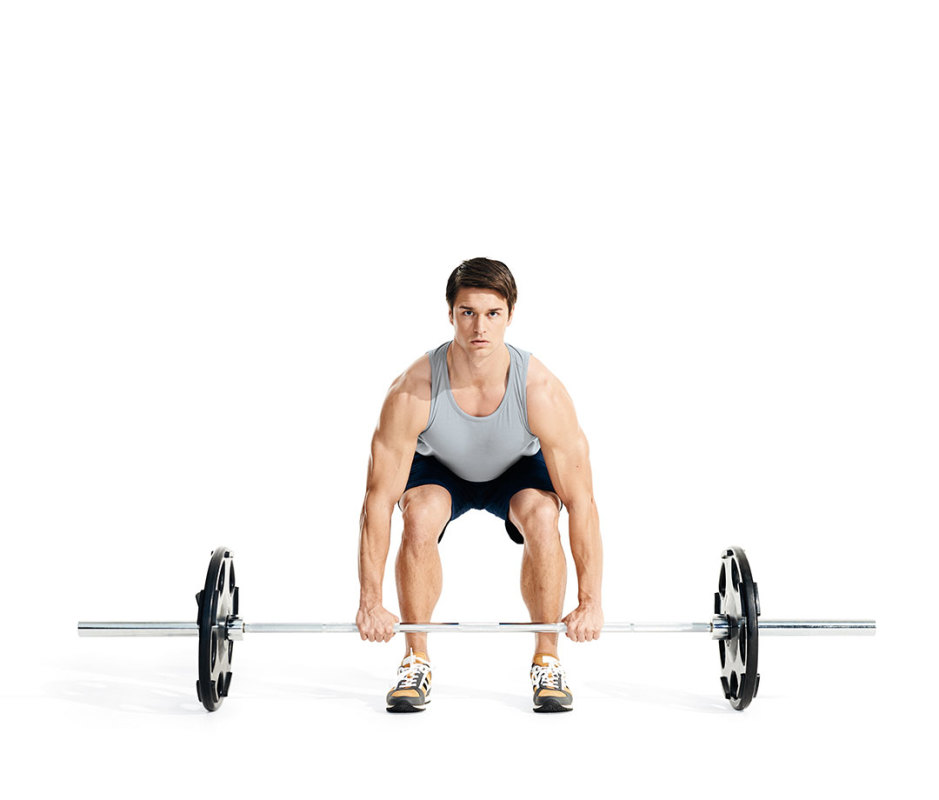
James Michelfelder & Therese Sommerseth
The Science Behind the 5×5 Workout’s Effectiveness
So why is the 5×5 workout so effective at building strength and muscle? The answer lies in its fundamental training principles: progressive overload, mechanical tension, and specificity.
Progressive Overload: The Key to Getting Stronger
The 5×5 program is rooted in the principle of progressive overload. Simply put, progressive overload means gradually increasing your weight over time. Research shows that utilizing progressive overload forces your muscles to adapt by growing bigger and stronger. In the 5×5 workout, you start with a manageable weight—typically around 60 to 70 percent of your one-rep max (1RM)—and aim to add 5 to 10 pounds to your lifts each week.
This incremental increase in load is what drives muscle and strength gains. If you consistently lift the same weight, your body has no reason to adapt, but by continually pushing your limits, you create the stimulus your body needs to grow.
Mechanical Tension: The Force That Builds Muscle
Another reason the 5×5 workout is so effective is its focus on mechanical tension. When you lift heavy weights, your muscles experience tension as they work to overcome the resistance. Studies suggest this tension triggers a cascade of biological responses that lead to muscle growth, mainly when the weight is heavy enough to challenge your muscles but not so heavy that it compromises your form.
The 5-rep range is ideal for maximizing mechanical tension. It’s low enough to allow you to lift heavy weights, but high enough that your muscles are under tension for sufficient time to stimulate growth.
Specificity: Building Strength Where It Matters
The 5×5 program is also effective because it emphasizes specificity—training directly targeting the movements and muscle groups you want to improve. Since the program revolves around heavy compound lifts, it trains your body to strengthen in the most important movements for overall strength development. Squats, deadlifts, bench presses, and rows aren’t just great for building muscle—they also mimic movements you perform in everyday life and sports, making you stronger and more functional overall.
Related: 50 Best Shoulder Exercises for a Full Workout
Best 5×5 Workout Program: One-Week Plan
Now that you know the science behind why the 5×5 workout works, it’s time to put it into practice. Below is a one-week 5×5 workout plan to maximize strength and muscle gains. This program includes three training days with compound lifts and accessory movements to work lower- and upper-body strength. The compound lifts are the core of each workout, and the accessory exercises help target supporting muscles and prevent imbalances.
Day 1
1. Back Squat

Beth Bishoff
How to Do It
- To start, set the barbell on the squat rack just below your shoulder height.
- Position the bar across your upper back and grip the bar firmly.
- Step back with your feet shoulder-width apart.
- Lower your body by bending your hips and knees, keeping your chest up and your back flat.
- Descend until your thighs are parallel to the floor.
- Drive through your heels to stand back up.
- That’s 1 rep.
- Perform 5 sets of 5 reps starting with 60 to 70 percent of your 1RM and add weight each week.
2. Close-Grip Bench Press
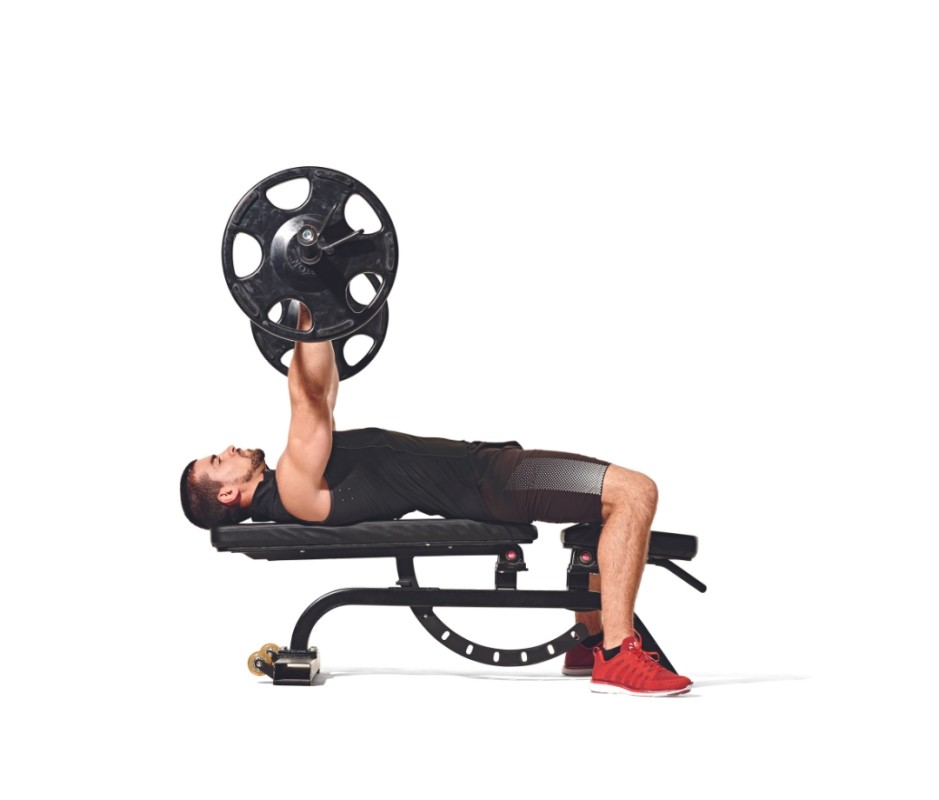
James Michelfelder
How to Do It
- Lie on a bench with your feet flat on the ground, to start.
- Grip the barbell with your hands slightly narrower than shoulder-width.
- Lower the bar to your mid-chest, keeping your elbows tucked.
- Press the bar up to full extension using your triceps and chest.
- That’s 1 rep.
- Perform 5 sets of 5 reps.
Pro Tip
Keep your elbows tucked to make sure you are minimizing stress on your rotator cuff.
3. Pullups
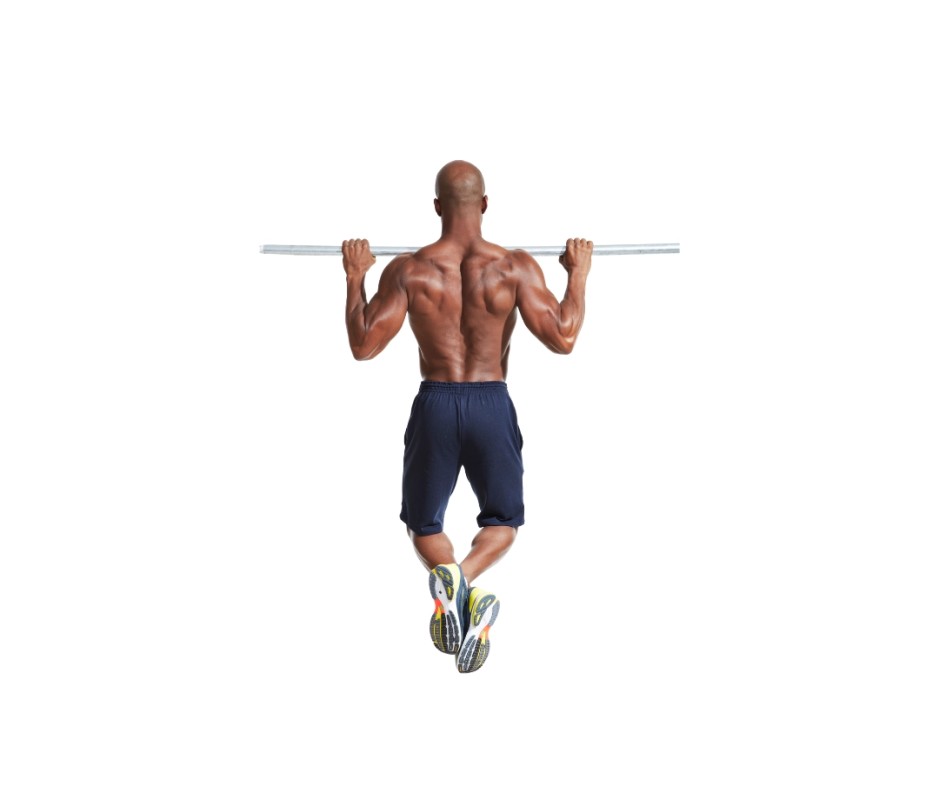
Beth Bischoff
How to Do It
- Grip the pullup bar with your hands slightly wider than shoulder-width, to start.
- Hang with your arms fully extended.
- Pull your chest toward the bar by squeezing your back.
- Lower yourself back to the start position under control.
- That’s 1 rep.
- Perform 5 sets of 5 reps, using your body weight to start and adding weight with a belt as needed.
4. Dumbbell Lateral Raises
Beth Bischoff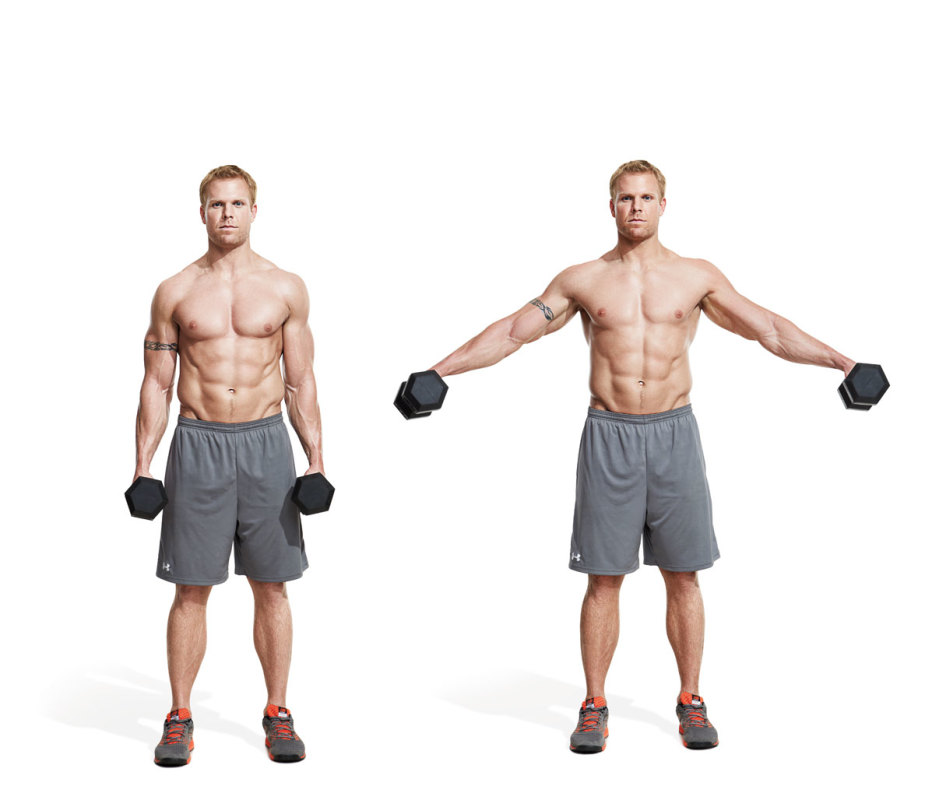
How to Do It
- Stand with a dumbbell in each hand and your arms at your sides, to start.
- Raise your arms out to the side until they reach shoulder height.
- Lower the weights slowly, avoiding the use of momentum.
- Perform 3 sets of 8 to 12 reps.
5. Reverse Crunches
Beth Bischoff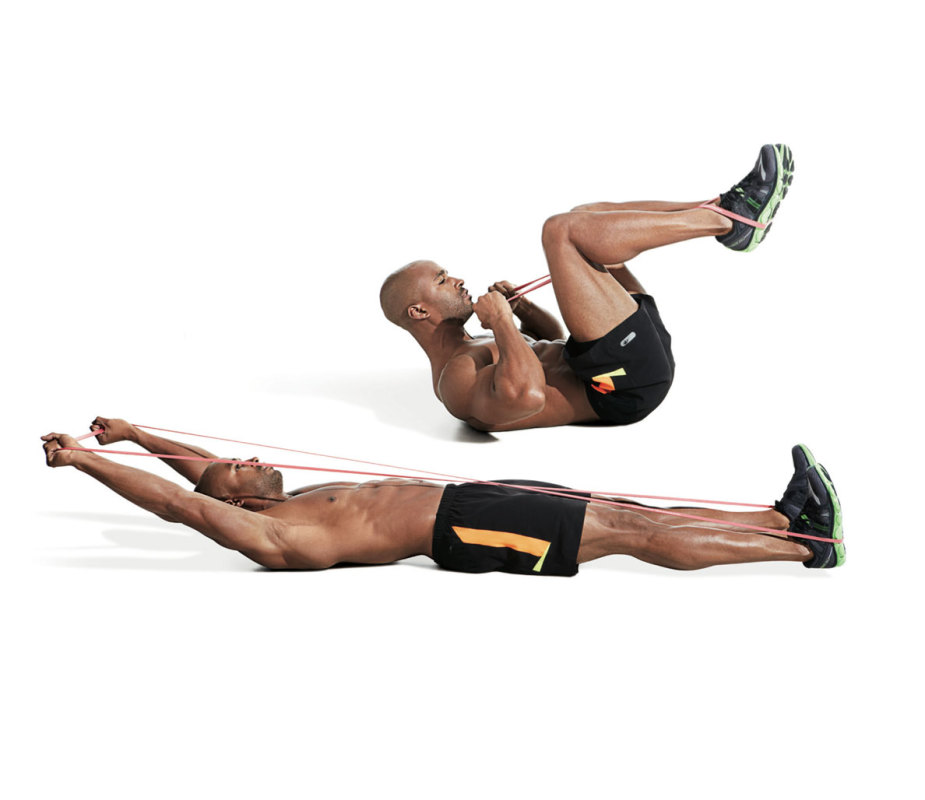
How to Do It
- Lie on your back with your legs bent and your knees lifted toward your chest, to start.
- Lift your hips off the ground by contracting your abs.
- Slowly lower your hips back to the starting position, keeping tension in your core.
- Perform 3 sets of 8 to 12 reps.
Related: Best Full-Body Workout to Shed Fat and Gain Muscle
Day 2
1. Deadlift

Beth Bischoff
How to Do It
- Stand with your feet hip-width apart and the barbell over your midfoot, to start.
- Bend your hips and knees, and grip the bar just outside your knees.
- Brace your core, keep your back flat, and lift the bar by extending your hips and knees.
- Stand tall, then lower the bar back down by hinging at your hips and bending your knees.
- That’s 1 rep.
- Complete 5 sets of 5 reps, starting light to maintain perfect form.
2. Overhead Press

Beth Bischoff
How to Do It
- Stand with your feet shoulder-width apart with the barbell at shoulder height, to start.
- Brace your core and press the bar straight overhead.
- Lower the bar back to the starting position with control.
- That’s 1 rep.
- Perform 5 sets of 5 reps, keeping your core tight as you press straight overhead.
3. Bentover Barbell Rows
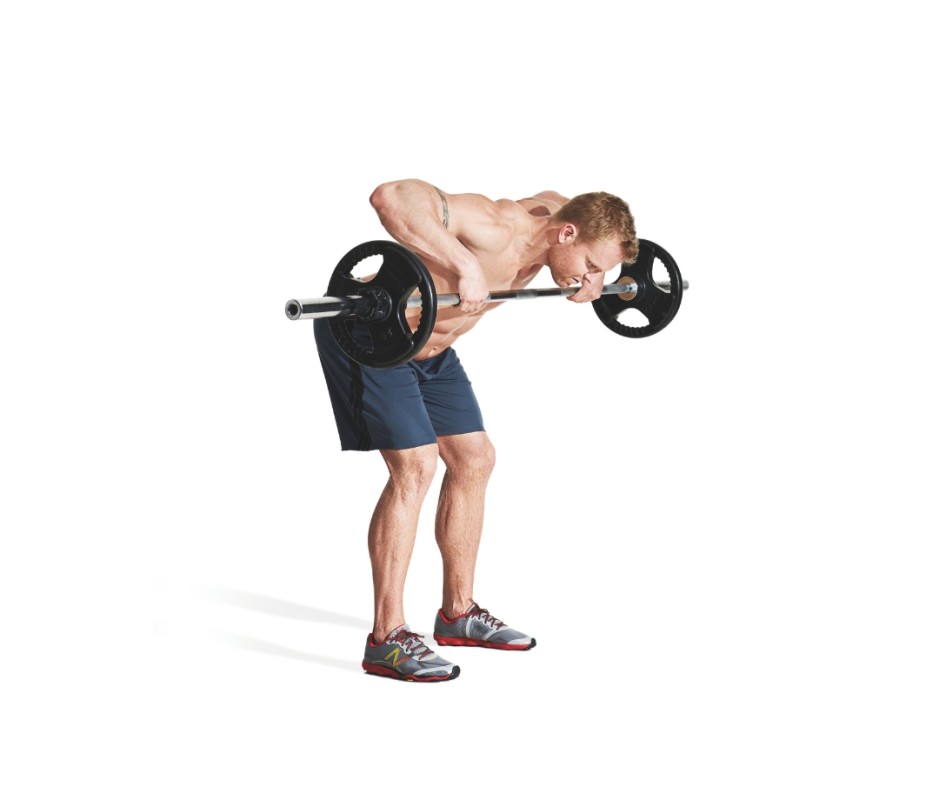
Beth Bischoff
How to Do It
- To start, bend your knees slightly and hinge forward at your hips, keeping your torso parallel to the ground.
- Grip the bar just outside your shoulder width and keep your back flat.
- Row the bar toward your lower ribs, squeezing your shoulder blades together.
- Lower the bar under control.
- That’s 1 rep.
- Complete 5 sets for 5 reps.
Pro Tip
Keep your back flat and pull the bar toward your lower ribs.
4. Barbell Stiff Leg Deadlifts
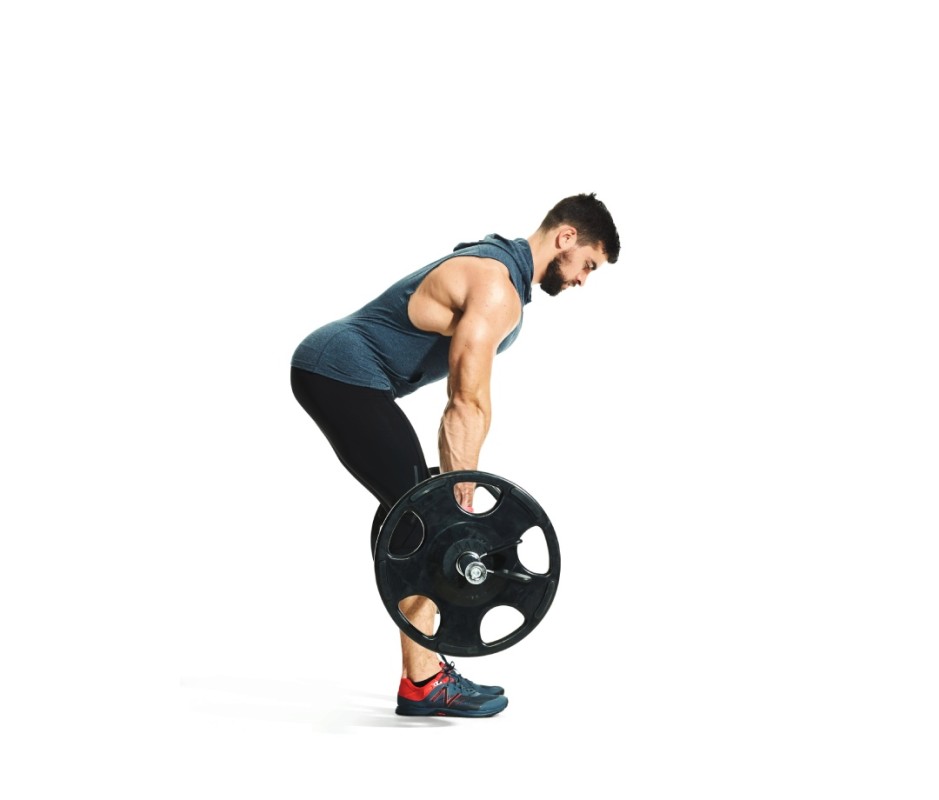
James Michelfelder
How to Do It
- Hold the barbell in front of your thighs with a shoulder-width grip, to start.
- Keep a slight bend in your knees, hinge at your hips, and lower the bar down your legs.
- Feel the stretch in your hamstrings, and drive your hips forward to return to standing.
- That’s 1 rep.
- Perform 3 sets of 8 to 12 reps.
5. Hanging Leg Raises

James Michelfelder
How to Do It
- Hang from the pull-up bar with your legs together, to start.
- Lift your legs straight in front until they’re parallel to the ground.
- Lower your legs with control, avoiding any swinging.
- Complete 3 sets of 8 to 12 reps.
Related: Best Landmine Exercises to Raise the Bar on Strength Workouts
Day 3
1. Front Squat
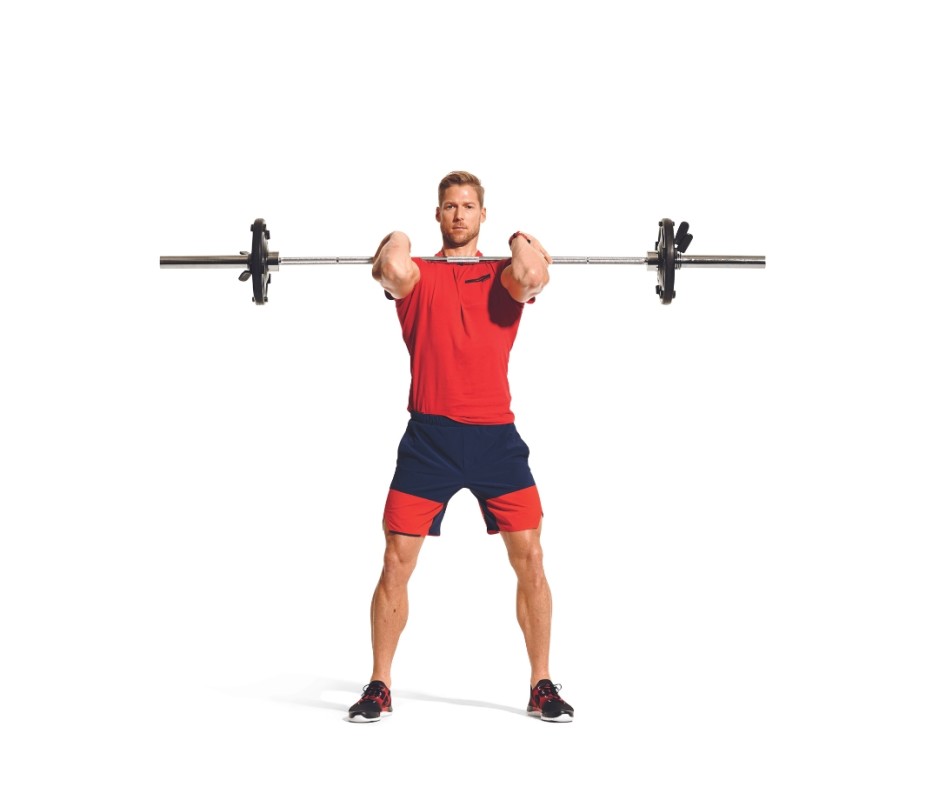
James Michelfelder
How to Do It
- Set the barbell on the squat rack at your shoulder height, to start.
- Position the bar across the front of your shoulders, keeping your elbows high.
- Step back with your feet shoulder-width apart.
- Squat down by bending your hips and knees, keeping your chest up.
- Drive through your heels to stand back up.
- That’s 1 rep.
- Perform 5 sets of 5 reps.
2. Incline Bench Press

James Michelfelder
How to Do It
- Lie on an incline bench 30 to 45 degrees, to start.
- Grip the barbell just outside your shoulder width.
- Lower the bar to your upper chest, keeping your elbows slightly angled.
- Press the bar back up, focusing on your upper chest and shoulders.
- That’s 1 rep.
- Compete 5 sets of 5 reps.
3. Barbell Shrugs

Beth Bischoff
How to Do It
- To start, stand with the barbell in front of your thighs using an overhand grip.
- Shrug your shoulders up toward your ears, squeezing your traps at the top.
- Lower the barbell slowly.
- That’s 1 rep.
- Perform 5 sets of 5 reps.
4. Cable Face Pulls
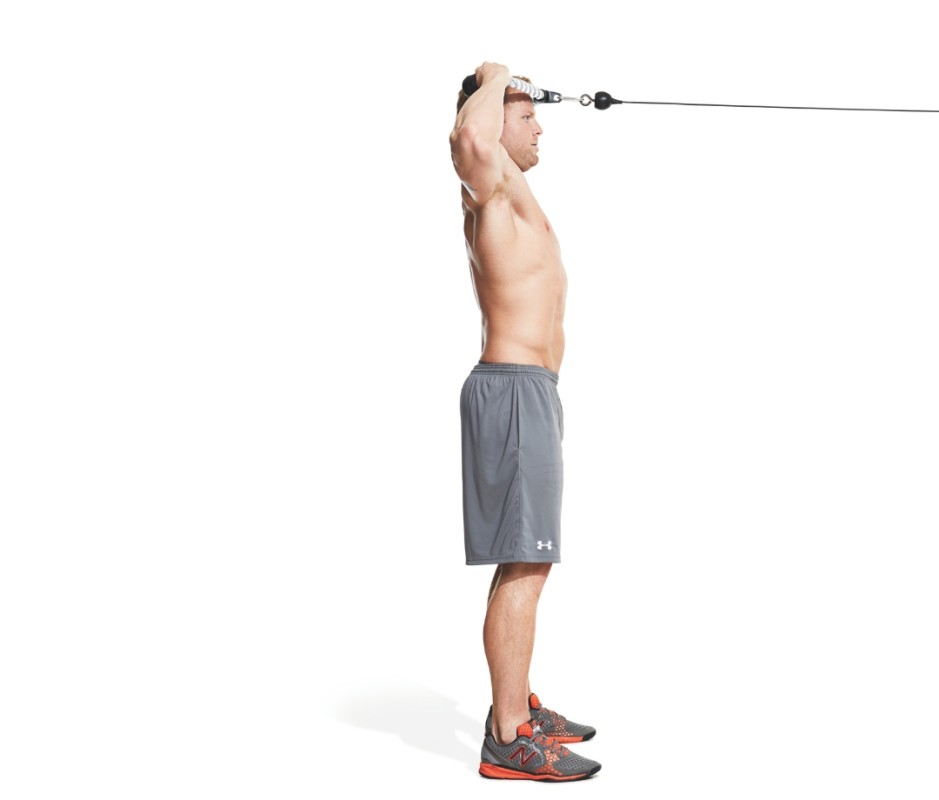
Beth Bischoff
How to Do It
- Attach the rope handle to a high pulley and grip the handles with your palms facing inward, to start.
- Pull the rope toward your face, keeping your elbows high.
- Squeeze your upper back and rear deltoids at the top.
- That’s 1 rep.
- Complete 3 sets of 8 to 12 reps.
5. Russian Twists
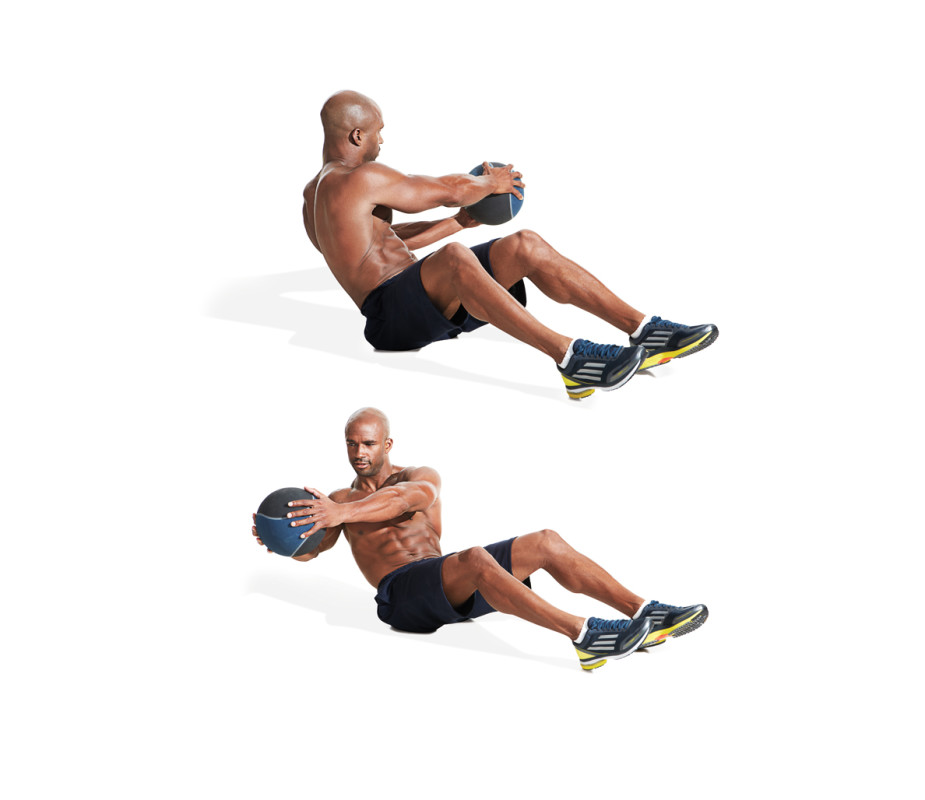
James Michelfelder
How to Do It
- Sit on the floor with your knees bent and feet flat, to start.
- Hold a weight or medicine ball, lean back slightly, and lift your feet.
- Rotate your torso side to side, bringing the weight across your body.
- Perform 3 sets of 8 to 12 reps.
Pro Tip
Keep your core engaged throughout the movement to avoid straining your lower back.
Related: 50 Best Abs Exercises That Pack a Six-Pack Punch
How to Determine the Right Weight for a 5×5 Workout
Choosing the right weight is essential to making progress in the 5×5 program. Too light, and you won’t challenge your muscles enough to grow. Too heavy, and you risk compromising your form and increasing the likelihood of injury. So, how do you find the sweet spot?
Start Light, Build Confidence
When starting the 5×5 program, aim to begin with about 60 to 70% of your one-rep max (1RM) for each lift. This weight should be one that you can lift for five reps with good form but still feels challenging. For example, if your 1RM squat is 200 pounds, start with 120 to 140 pounds.
Progressive Overload
The key to the 5×5 workout is progressive overload—adding weight to the bar over time. After your first week, aim to increase the weight by 5 to 10 pounds on each main compound lift. If you find that you’re struggling to complete all 5 sets of 5 reps, back off slightly and build from there.
Listen to Your Body
While the goal is to push yourself and increase weight each week, listening to your body is essential. If you’re feeling overly fatigued or experiencing pain, taking a step back is okay. Remember, strength training is a marathon, not a sprint.
Related: How to Do Spider Curls for Bigger Biceps
Benefits of the 5×5 Workout Program
The 5×5 workout program offers a wide range of benefits for both beginners and experienced lifters. Let’s examine why this program is so effective.
Builds Both Strength and Muscle
As we discussed earlier, the 5×5 workout hits the perfect balance between strength and hypertrophy. The heavy weights and low reps build raw strength, while the total volume (5 sets) is enough to stimulate muscle growth. This makes the program ideal for anyone who wants to get stronger and more muscular at the same time.
Improves Functional Strength
Because the 5×5 program focuses on compound lifts, it builds strength directly, translating to real-world activities. Squats, deadlifts, and presses are all functional movements that engage multiple muscle groups and mimic how your body moves daily. This makes the 5×5 workout effective for building muscle and improving overall athleticism and performance.
Efficient and Time-Saving
The 5×5 workout is simple, yet highly effective. With just a few key lifts per session, you can work your entire body and achieve impressive results without spending hours in the gym. This efficiency is one of the reasons the 5×5 program is so popular—it delivers big results with a relatively small time investment.
Easy to Track Progress
Another benefit of the 5×5 workout is its simplicity. Because you’re performing the same lifts each week and gradually increasing the weight, it’s easy to track your progress and see your strength improve over time. This can be highly motivating, especially for beginners who may not have experienced consistent gains.
Suitable for All Experience Levels
While the 5×5 workout is often recommended for beginners, it’s also highly effective for intermediate and advanced lifters. The program’s emphasis on heavy compound lifts makes it a great choice for anyone looking to build strength, regardless of experience level.
Related: 7 Best Oblique Exercises to Put the Finishing Touches on Your Six-Pack

